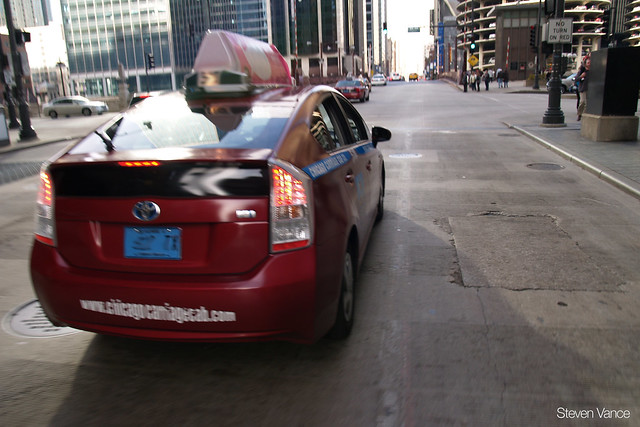[flickr]photo:6795484432[/flickr]
This post is third in a series on crash data sponsored by Jim Freeman, a Chicago lawyer specializing in pedestrian and bicycle crashes. Read the other posts in this series.
I recently came across an undated and unattributed article on an injury lawyer’s website about bike crashes. The website is designed to capture as many keyword searches about bike accidents and injuries as possible, and likely shares some its content with other injury lawyer websites around the country.
The article is titled Is bicycling in Chicago more dangerous than in surrounding Illinois counties?. Its URL gave away the publishing date as June 2012. I read the article and I decided to verify one of the claims made there:
Looking at 2010 data collected from all counties vs. Chicago, Illinois collar county bike riders were actually more likely than riders in Chicago to be involved in either fatal or incapacitating bike accident!
It’s true. At least based on the data that is collected.
Here’s some background on the kind of data that is collected: Every 10 years, the Census Bureau conducts the decennial census and asks the entire population in the United States to list the transportation mode they typically used to get to work in the previous week for the longest distance. Every year (starting in 2005), the Census Bureau asks the same question but for a smaller portion of the population in the American Community Survey (ACS). The intention of ACS is to replace the decennial census to give researchers the same quality and breadth of data every 5 years instead of 10.
Aside from the shortcomings in the data based on that question (typical mode to work for the longest distance), it doesn’t count what modes people use to get everywhere else. The Travel Tracker Survey tells us that households in Cook County make an average of 9.1 trips per day (and the average household in Cook County has 2.6 people) – that’s 3.5 trips per day, and not all of them are to and from work.
Data that could better show the likelihood of getting into a crash is “bicycle miles traveled”. This measurement would ignore trip purpose and destination and simply tell how often people are cycling in the streets, exposed to the possibility of being involved in a crash with an automobile. Another useful measurement would be “ridership”, that is, how many people are cycling each day for any trip purpose. We’ve discussed how Chicago currently counts people riding bikes.
Without those data, though, planners rely on commuting data as a proxy for the number of people outside on a bike each day (well, each weekday). Below is verification of the claim that people outside Chicago and outside Cook County have a higher probability of being in a crash.
For every 1,000 people counted by the ACS who commuted to work by bicycle, the following number of people were involved in a crash in 2010 in which they received an incapacitating injury or died:
- Chicago: 10.68 people
- Cook County, including Chicago: 11.92
- Cook County, excluding Chicago: 15.27
- Collar counties*: 21.10
The same trend is present when looking at receiving any kind of injury from a bicycle crash with an automobile: those in Chicago are less likely to experience an injury than those in surrounding counties.
For every 1,000 people counted by the ACS who commuted to work by bicycle, the following number of people were involved in a crash in 2010 in which they received an injury:
- Chicago: 109.96 people
- Cook County, including Chicago: 116.12
- Cook County, excluding Chicago: 132.73
- Collar counties: 126.38
Download the spreadsheet I created to calculate these figures (.xls).
The spreadsheet contains other data, including density, average number of vehicles available per household (as you might guess, Chicago has the lowest number of vehicles available per household), mode share of bike commuting, and population. The low likelihood of crashing while bicycling in Chicago appears to be correlated with the city’s higher mode share of bike commuting, but also seems related to its population density and the lower number of vehicles available per household. There is safety in numbers.
* The collar counties are DuPage, Kane, Kendall, Lake, McHenry, and Will. These are the counties in the Chicago Metropolitan Agency for Planning (CMAP) research area.
N.B. All data here are estimates from a sample of the population and are subject to error margins. All demographic data is collected in the 2008-2010 3-year American Community Survey, and downloaded from either CMAP’s website (transportation modes, household size, vehicle availability), or the American FactFinder. Crash data is only from 2010, from the Illinois Department of Transportation (IDOT).
Photo shows people cycling in Blue Island, Illinois, adjacent to the southern border of Chicago. Photo contributed to our Flickr group by Jane Healy.
